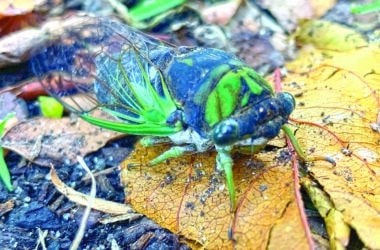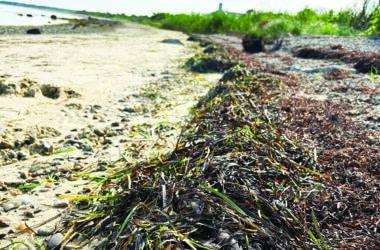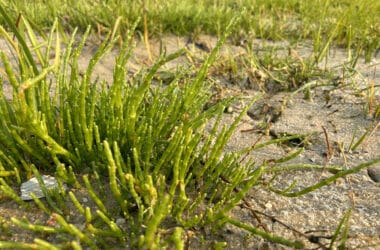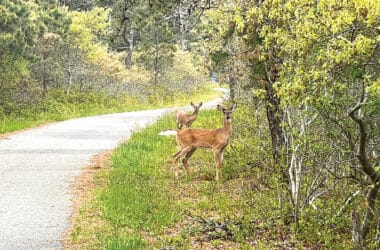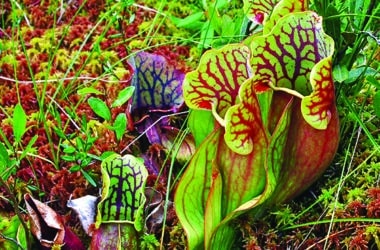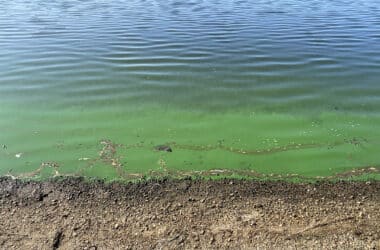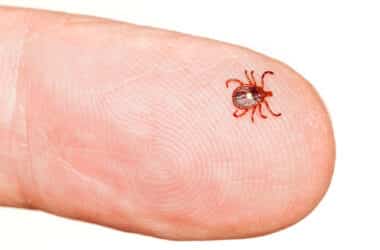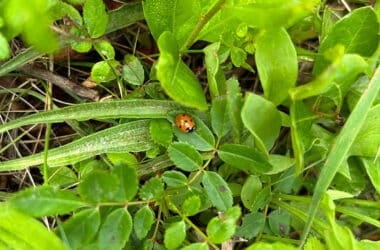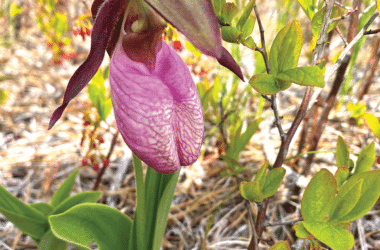You may have been hearing some buzzzzz about cicadas in our regional news outlets lately. Throughout the state, people are preparing for an onslaught of insects. Why, when, and where?
Tag: Dr. Sarah Treanor Bois
The Mystery of Eels on Nantucket
As spring weather finally begins to grace us here on Nantucket, we begin to look for our favorite signs of spring; cherry blossoms, daffodil blooms, spring peeper chorus, osprey returning, and…eels! That’s right, the annual spring migration of young eels is upon us, heralding the start of spring for the island.
The Wrack Line
The past several days have been stunningly beautiful, though the hot and muggy weather forcing us to seek relief at the shoreline—well, forcing might be too strong a word. How about: it gave us an excuse to head to the beach to swim and play in the water. Whether on vacation, trying to occupy the kids, or just i need of a little salt water solace, many of us have escaped to the beach these past few weeks.
Sea Pickles: A Tasty Saltmarsh Indicator
by Dr. Sarah Treanor Bois, PhDDirector of Research & Education at the Linda Loring Nature Foundation Chicken claws, sea beans, glasswort, sea asparagus—these are all common names for the same plant. With multiple species of glasswort worldwide, these plants are commonly called by their Latin genus, Salicornia. The word “salicornia” […]
Missing Mammals
A theme of many of my articles is how special and unique Nantucket’s flora and fauna are. Often I highlight rare species that call the island home: endangered plants, rare butterflies, insects, threatened birds… life on-island that makes Nantucket’s ecology unique. Today, however, I am going to discuss the absence of a group of species which gives the island species character: mammals.
Predatory Plants
by Dr. Sarah Treanor Bois, PhDDirector of Research & Education at the Linda Loring Nature Foundation It sounds like something out of a movie: predatory plants. This has me thinking zombies, Venus fly traps, body snatchers, and, possibly, giant dog-eating vines (Feed me Seymore!). However, predatory plants are not a […]
Danger in the Blooms
When I was a kid, the first movie I ever saw in 3D was The Creature from the Black Lagoon. The movie was from 1954, but in the 1980s the VHS tape was released, and we all had the special glasses. It was fun in the watching and seemed sort of ridiculous. However, as a 7-year-old, it instilled a fear of freshwater in me that was hard to shake. I wouldn’t go into a pool or lake for the rest of the summer without thinking about the swamp man.
Ticks on the Hunt
I first encountered Lone Star ticks on Tuckernuck Island in 2015. I had one adult female hitchhike back to Nantucket on me, and I reported it to Tick Report. At the time, it was only the second report from Nantucket, with many more known from Tuckernuck Island. Of course, birds fly easily from one island to another, and deer swim. It was just a matter of time before Nantucket and all of its available habitat became the next place for Lone Star ticks to populate.
Summer Magic
Ladybug season is upon us! As May rolls into June, we are at peak observation time for our myriad of ladybug species—when the larvae change into the adult stage we know and love. And even though it’s not unusual to see a ladybug around the island, it’s still a bit of summer magic to spot one.
Look Out for Lady Slippers
It’s the time of year to hunt for one of my favorite spring flowers. No, not to pick, but to view and enjoy in the wild. The Pink Lady’s Slipper Orchid (or Lady Slipper Orchid), Cypripedium acaule, is emerging now in time to flower around Memorial Day. As the name implies, Lady Slipper Orchid flowers look like elegant pink ballet slippers. Of course, being a New England native orchid, these plants are much hardier that their delicate appearance implies. The Lady Slipper orchid is a hardy perennial that is able to withstand the brutal New England winters underground. The leaves emerge in springtime (usually early to mid-May) with the flowers visible late May to early June.

